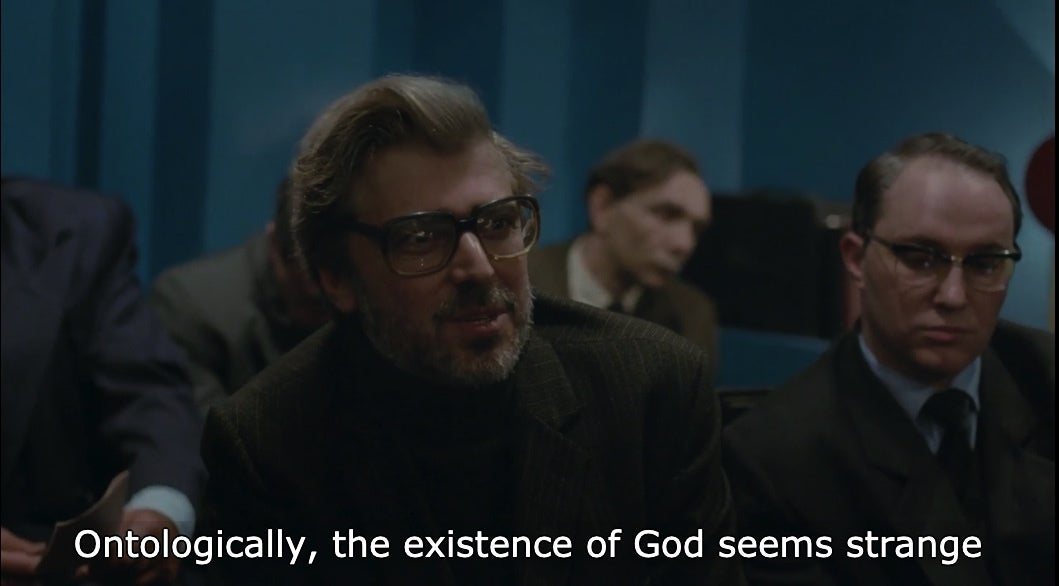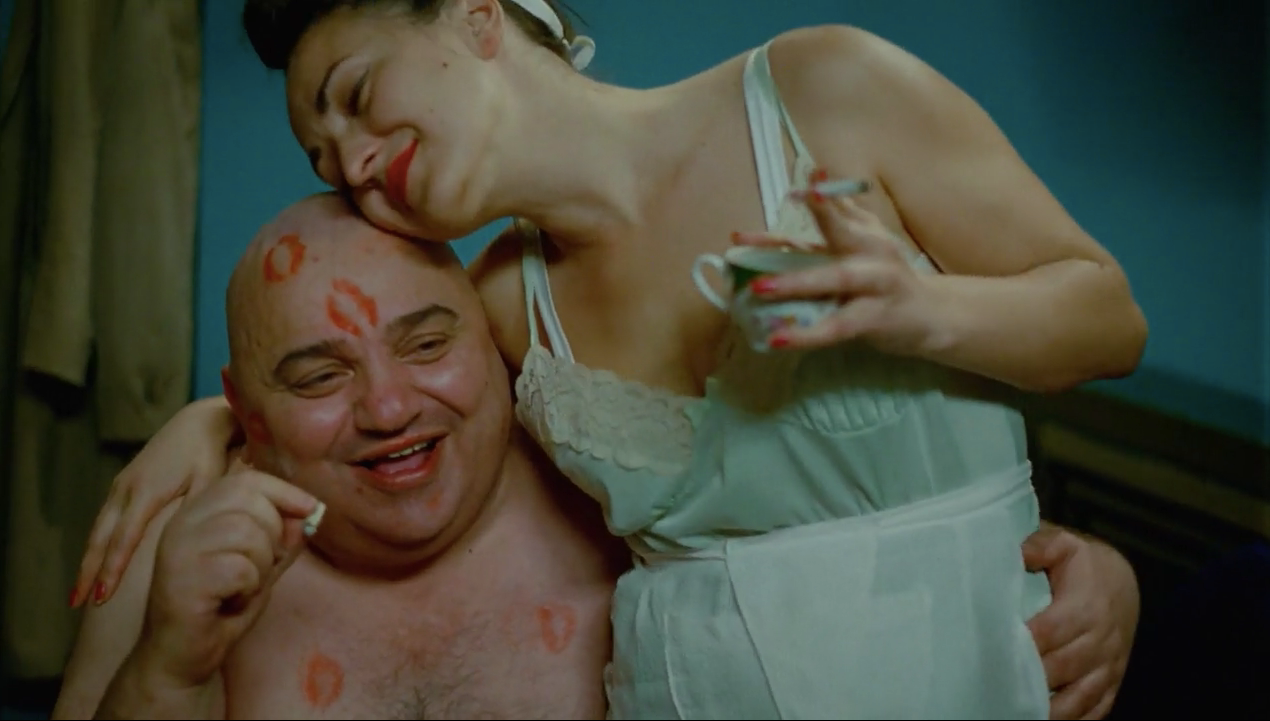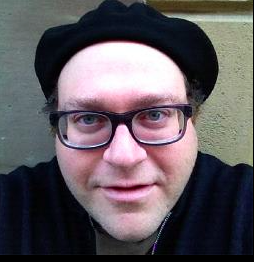Perhaps you saw Philip Seymour Hoffman as a theater director recreating reality on a soundstage in Charlie Kaufman’s Synecdoche, New York and thought, “Ah, yes, an easily understood metaphor, but surely nothing this extravagant could ever happen in real life!”
You were wrong. With pre-production starting in 2006, Ilya Khrzhanovsky, a 30-year-old from a family of artistic renown with just one feature film to his credit, began work on an unusual biopic of the Nobel Prize-winning Soviet physicist Lev Landau. By the time he called cut in 2011, he had assembled over 700 hours of 35mm footage. More importantly — and controversially — he had recreated, in the Ukrainian city of Kharkiv, a closed alternative reality, where he ruled as God Emperor of a cinematic totalitarian state. Now, in April 2020, the finished product, known as Dau, is becoming available to stream.
While everyone in the Russian and Ukrainian film industries were soon aware of Dau (named for Landau’s nickname), word came to Western cinephiles thanks to an article in GQ from 2011. “You gotta check this out,” the FWD emails and Facebook shares read at the time, and while Michael Idov’s prose somewhat cops to a “print the legend” attitude, if only half of it’s true, it’s still incredible.
Khrzhanovsky resurrected a slice of the Soviet Union, with a cast and crew numbering in the thousands living and working in an enormous set called “The Institute.” Any whiff of anachronism could get you a fine. Extras wore period clothes down to their starchy, uncomfortable underwear. Characters lived on site and fully inhabited their roles. If they played a waitress, they were a waitress. The only professional actor with a significant part was Radmila Shchegoleva as Dau’s wife Nora — she was sent on assignment to work at a chocolate factory and a hospital to “beat the actress out of her” before she reported to The Institute.
Khrzhanovsky was drawn to Dau because he was a genius, and he cast Greek conductor Teodor Currentzis in the role. He’d never acted before and his Russian was spotty, but, as Idov reports, the thinking was “geniuses must play geniuses” and “all geniuses are foreigners.”
Dau was also known for being in the vanguard of the “free love” movement, and here’s where more parallels between subject and director emerge. There are reports of a revolving door at the Kharkiv set (where no cell phones were allowed) for Khrzhanovsky’s numerous female “assistants.” Some stayed on board (and in groups) with devotion while others stormed off, slamming the door behind them. While this certainly sounds like a #MeToo nightmare that could, sadly, happen on pretty much any movie set, an oddity more specific to this project wasn’t just a revived Soviet look (the clothes! the wallpaper! the ashtrays!) but a return to a harsh, Stalinist way of life.
In addition to handling old radios and eating from period appropriate cans of caviar, the obedient cast and crew quickly fell in line with a system of snitching on colleagues who broke character, or were otherwise defiant. Stashed microphones were everywhere, as were eyes. It may sound absurd that anyone would voluntarily agree to such behavioral subservience, but any doubters should take a second look at the Stanford Prison Experiment, to which this project had some worrying parallels.
While many of the labs and living quarters at The Institute were filmed for storytelling purposes, other unusual things were going on. In one building, actual bona fide, award-winning scientists were flown in to do their theoretical thing, so long as they played by the rules. (James H. Fallon of the University of California, Irvine, makes a tweaked appearance as himself in the part of Dau that I’ve watched.) Another building housed “experimenters,” namely conceptual artists (Marina Abramovic and Andrew Ondrejcak are two that I’ve seen.) However — and this is part of what’s so strange — nothing at The Institute was filmed Big Brother-style. You lived your life in character, but when you were called in to act, you gave a performance “as yourself.” The rest of the time, you just lived at The Institute.
The financing for Dau began as a typical co-production between different European producers, until Russian telecom billionaire Sergey Adonyev came in with a blank check (I don’t know much about Adonyev, but according to Wikipedia he’s been repped by Alan Dershowitz for some lingering lawsuit, and nothing screams scumbag more than having that guy on your payroll).
Post-production on “the Stalinist Truman Show” lasted for so long that it felt like we’d never see anything. Then, last year, two art exhibits opened, one in London, the other in Paris, where you could come and gawk at the props and set design. One report compared it to Matthew Barney’s post-Cremaster show at the Guggenheim. But it took on something of a CCCP Disneyland, with Soviet-style actors stamping your paperwork as you entered the exhibits.
Two Dau films debuted at this February’s Berlin Film Festival, and I, as one who has been salivating to see this crazy-ass thing for years, refused to look at any of the reviews. All I know is that DAU. Natasha runs 134 minutes and netted cinematographer Jürgen Jürges a Silver Bear prize, and DAU. Degeneration is six hours and nine minutes. I also heard that there were accusations made against Khrzhanovsky just before Berlin concerning “psychological and sexual torture,” which he rejected as Russian propaganda. Also, while this project may have had on-the-level notables like Brian Eno contributing to the Paris exhibit, the films allegedly featured, and maybe glamorized, a group of notorious neo-Nazis led by Maxim Martsinkevich.
About a week ago, a website popped up with links to DAU. Natasha and DAU. Degeneration. Then it was just Degeneration, with a note that “all films will be available on April 24th.” Then that note changed to “DAU. Natasha and DAU. Nora Mother” will be available on April 24th, and teases for an additional 11 films (14 in total, one of which is eight and a half hours).
Truth is, Degeneration, at six hours, is enough to keep you busy. After giving my Amex numbers to this intensely shady Russian experiment, I clicked play.
The entire Dau project is set from 1938 to 1968 (the year the actual Landau died), and almost as a last middle finger to viewers trying to get a handle on this unwieldy thing, DAU. Degeneration, the first film widely available, is set last. Moreover, the character of Dau, who inspired this whole project, is, by this part of his life, debilitated after an auto accident, basically immobile and unable to speak. So Dau’s barely in DAU. Degeneration, and when he is, he’s mostly laying in bed, wheezing.
Suckers!
Not that this is a straight biopic. Landau did live and work at something called The Institute for Physical Problems, but I doubt that there was a mandate to “create a superman” there. Then again, who knows? The Soviet Union was secretive and weird!
There is, you’ll be glad to know, a plot in DAU. Degeneration. Basically, we watch the last handover of power at The Institute from a benign dope who can’t keep his hands off women, played by (and called) Alexey Trifonov, to a more stern and brutal KGB stooge played by (and called) Vladimir Azhippo. As Azhippo makes life harsher for the students (no more rock ‘n’ roll records!) and the service industry workers (no more strip dominoes!), there are long, fascinating scenes in offices, labs and lecture rooms where people talk about God and Goodness and Economic Theory and Quantum Physics and all sorts of really heavy shit. This is balanced by sequences that go late into the night at dormitories and dinner tables where all these eggheads drink vodka and let their demons out, cavorting and chasing each other, throwing dishes, yelling about art and communism and infidelity and anything else you might want someone in 1968 Soviet society to get amped up about.
It is, and I mean this sincerely, the absolute fucking best.

Most of DAU. Degeneration plays out like one of Frederick Wiseman’s heavily detailed, process-oriented documentaries, but, you know, a movie, not a fly-on-the-wall snapshot. This film is heavily art directed, and the experimentation scenes get dangerously close to sci-fi. There’s also a cute chimpanzee. But it’s not all good stuff.
The stream I rented (for $3) begins with a warning for “sexually abusive behavior, strong real sex, nudity and very strong language.” For four-and-a-half hours there was nothing in this movie to raise an eyebrow other than some adultery and Trifonov interviewing a would-be assistant, then tearing her clothes off. But then came the first of two unsimulated sex scenes that ends with a guy ejaculating on a girl’s lower back. I have no general issue with this (and indeed, admire the couple’s thoughtfulness with regard to the bedding), but what was weird was that the women in question were characters I’d grown to care about, and the man doing the shtupping was the aforementioned very real neo-Nazi, Maxim Martsinkevich.
In the movie, Martsinkevich and a few of his cronies are brought to The Institute to help install “some discipline,” and their first big scene is an interview with Azhippo. The conversation is long and philosophical and, unlike alt-right trolls online, they don’t just grunt about snowflakes and flash pics of Pepe — they speak somewhat eloquently and with nihilistic logic about eugenics, spouting racist views with a detached, scientific demeanor. (Martsinkevich, it should be noted, will not likely be downloading these films any time soon. He is serving his second of 10 years in a Russian federal labor colony on charges of robbery and hooliganism.)
Naturally, I didn’t know about this guy when I hit play (or watched him jizz), but now that I know who he is, it all feels very gross. When he ranted about Blacks being parasites, he wasn’t pretending, he meant it. When he schemed to beat up someone he suspected was gay, it was quite likely a reflection of his own past actions. When he said Jews control all the money, you know he meant that, too. (It’s worth pointing out that Khrzhanovsky is Jewish. Landau was, too, though an atheist, and one who argued against what is known as the Soviet Jewry Movement, an international rights campaign that began in the early 1960s to help Jews in the Soviet Union emigrate.)

Thirty minutes before the movie ended, the neo-Nazis slaughter a pig in an intentionally inhumane way. I eat pork, so I can’t take too much of the moral high ground here, but I’m pretty sure the pepperoni on my last pizza wasn’t from a tormented animal that had its neck slowly sliced, left to suffer, then had its head bashed in. Martsinkevich and his gang do this to shock and terrorize a group of people, and given what I know about this production, my guess is that Khrzhanovsky didn’t tell the others on set what they were about to see. Story-wise, I’m down, but there have been special effects in movies since day one for a reason, and at a certain point, the quest for verisimilitude crosses a moral line.
It’s this sense of unease that permeates the movie. Let’s call it the “if I didn’t know” factor: If I just came to DAU. Degeneration and, I suspect, the later Dau films, and didn’t know Ilya Khrzhanovsky and Sergey Adonyev created this weird alternate reality/art project/panopticon of questionable ethics, I’d probably just think it was… a movie. A really good movie, but a movie. I’m not entirely sold that all the method was necessary to make the end result. There are a lot of talented actors out there who can play neo-Nazis — you don’t need to unleash a real one. I’ve been to the pictures a lot in my day, and some of them are absolutely fantastic. And none of them went to this ridiculous fucking effort to get it all in the can.
That said, I’ve already put six hours in. I’ll probably be returning to The Institute soon.

